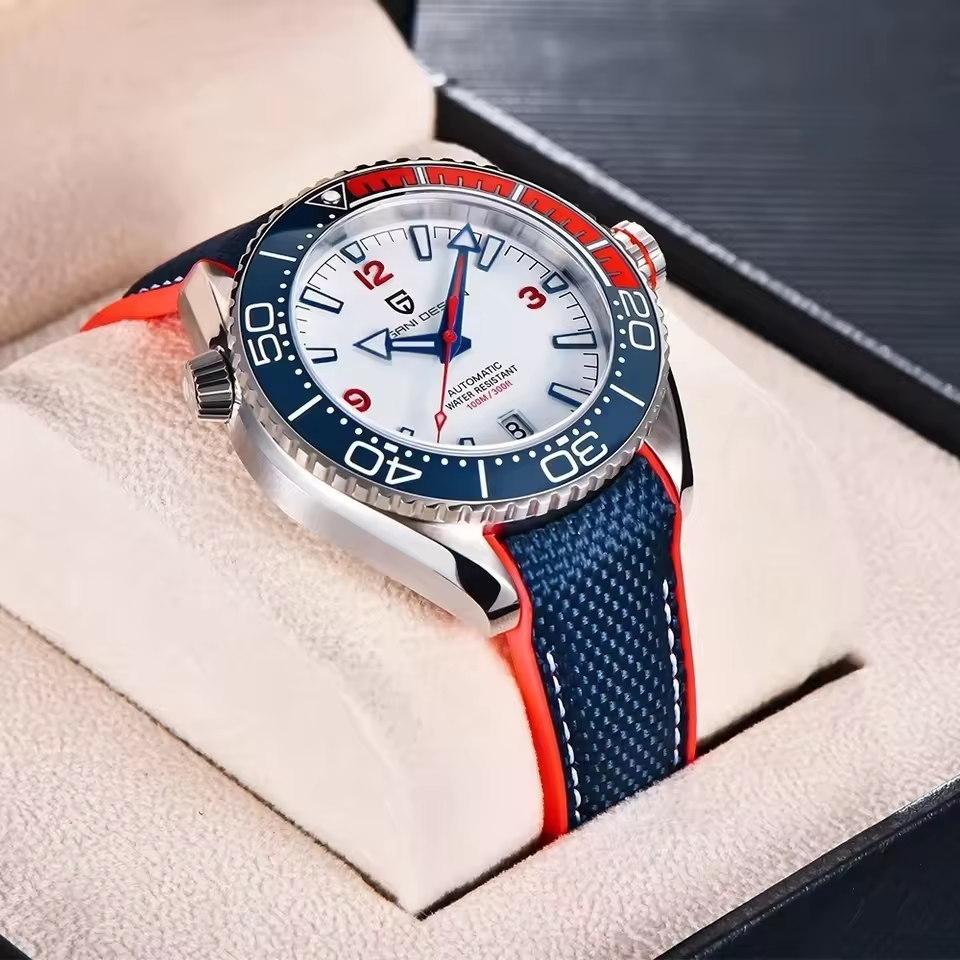Part 1: The Intricate Mechanics of Automatic Watches
1. Self-Winding Mechanism:
One of the fascinating aspects of automatic watches is their self-winding mechanism. Unlike quartz watches that rely on batteries, automatic watches harness the motion of the wearer’s wrist to power the timekeeping mechanism. Inside the watch, a rotor spins freely with the movement of the wrist, winding the mainspring that stores the energy needed to keep the watch running. This ingenious design eliminates the need for manual winding and ensures that the watch remains powered as long as it is worn regularly.

2. Complex Inner Workings:
Automatic watches possess highly intricate inner workings that are truly marvels of engineering. At the core of an automatic watch is its mechanical movement, comprised of an intricate arrangement of gears, springs, and levers that function in unison. These components play a vital role in regulating the smooth flow of energy throughout the watch, ensuring precise timekeeping. Among the crucial parts of the movement are the escapement and balance wheel, which work in tandem to control the motion of the watch’s hands. With every beat of the balance wheel, the gears of the watch progressively advance, ensuring that time is accurately measured. This harmonious interaction of components within the mechanical movement is what allows automatic watches to function with exceptional precision and reliability, solidifying their place as mechanical wonders in the world of horology.
Part 2: The Artistry of Automatic Watches
1. Skilled Craftsmanship:
Automatic watches are a testament to the artistry and skill of watchmakers. Each component of the movement is meticulously crafted by highly trained artisans, who meticulously assemble and adjust the intricate parts to ensure optimal performance. The complexity of the movement requires precision and attention to detail, making automatic watches true works of mechanical art.

2. Decorative Finishes:
Automatic watches are frequently adorned with decorative finishes that enhance their visual appeal. Watchmakers utilize techniques such as Geneva stripes, perlage, and blued screws to add intricate and captivating details to the movement. These decorative finishes not only elevate the overall aesthetics of the watch but also serve as a testament to the exceptional craftsmanship and meticulous attention to detail invested in each timepiece. The Geneva stripes, also known as Côtes de Genève, are elegant parallel lines engraved on the bridges and rotors, creating a mesmerizing pattern. Perlage, on the other hand, involves tiny circular patterns engraved on the surfaces, providing a captivating texture to the movement. Additionally, blued screws, achieved through the heating and tempering process, offer a touch of color and refinement.
Part 3: The Advantages of Automatic Watches
1. Perpetual Motion:
One of the notable advantages of automatic watches lies in their perpetual motion. When worn regularly, the self-winding mechanism eliminates the need for manual winding or battery replacements, ensuring that the watch remains powered. This inherent convenience and reliability make automatic watches an appealing choice, especially for individuals who value the heirloom quality and lasting endurance of mechanical timepieces.

The perpetual motion of automatic watches stems from the wearer’s natural wrist movements, which activate the self-winding mechanism. With each motion, a rotor inside the watch rotates, causing the mainspring to wind and store energy. As long as the watch is worn consistently, this energy is continuously replenished, allowing the watch to function without interruption.
The ability of automatic watches to sustain their power reserve without external intervention is a testament to their engineering ingenuity. It grants wearers the freedom to enjoy their timepieces without worrying about manual winding or the restricted lifespan of a battery. The convenience, reliability, and inherent connection to horological traditions make automatic watches a favored choice among enthusiasts and those seeking timeless sophistication.
2. Timekeeping Accuracy:
Despite being powered by mechanical movements, many automatic watches offer excellent timekeeping accuracy. Advances in watchmaking technology, along with strict quality control processes, have resulted in automatic movements that rival the accuracy of quartz watches. Modern automatic watches typically have a daily accuracy range of a few seconds, making them reliable timekeepers for everyday use.

Part 4: Caring for Automatic Watches
1. Regular Wearing:
To maintain the smooth operation of an automatic watch, it is advisable to wear it regularly. The natural motion of the wrist keeps the self-winding mechanism engaged, ensuring that the watch remains powered. This continuous movement charges the mainspring, providing the energy necessary to keep the watch running accurately.
However, if someone does not wear an automatic watch for an extended period, it may stop running. This happens because the mainspring gradually loses its stored energy over time. To restart the watch, one needs to manually wind it by rotating the crown clockwise. This action manually winds the mainspring, supplying the initial power required for the watch to resume its operation.
Regular wearing of an automatic watch not only ensures its continual functionality but also contributes to its overall longevity. The consistent use of the self-winding mechanism helps to keep the internal components lubricated and operating smoothly. By following these practices, enthusiasts can enjoy the reliable timekeeping and enduring beauty of their automatic watches for years to come.
2. Maintenance and Servicing:
To ensure optimal performance, regular maintenance is essential for automatic watches, just like any other mechanical device. It is recommended to have the watch serviced by a professional watchmaker every three to five years. During this maintenance, the watch undergoes a comprehensive process to preserve its accuracy and longevity.

The servicing procedure involves a thorough cleaning of the watch’s components to remove any dirt or debris that may have accumulated over time. The watchmaker carefully disassembles the movement, examining each part for wear or damage. Any worn or damaged components are replaced to restore the watch’s functionality.
Additionally, the watchmaker lubricates the movement with specialized oils to reduce friction and ensure smooth operation. The movement is then reassembled, and the watch is carefully adjusted to maintain its accuracy. These adjustments may include regulating the balance wheel and calibrating the hands.
By following the recommended maintenance schedule, automatic watches maintain accuracy and prolong their lifespan. This preserves their quality and value. In conclusion, automatic watches combine intricate mechanics and skilled craftsmanship. They have self-winding mechanisms, complex inner workings, and decorative finishes. These watches offer reliable timekeeping without manual winding or battery replacements. Regular wearing and maintenance are essential. As you wear and appreciate your automatic watch, you become part of a tradition of mechanical excellence.


